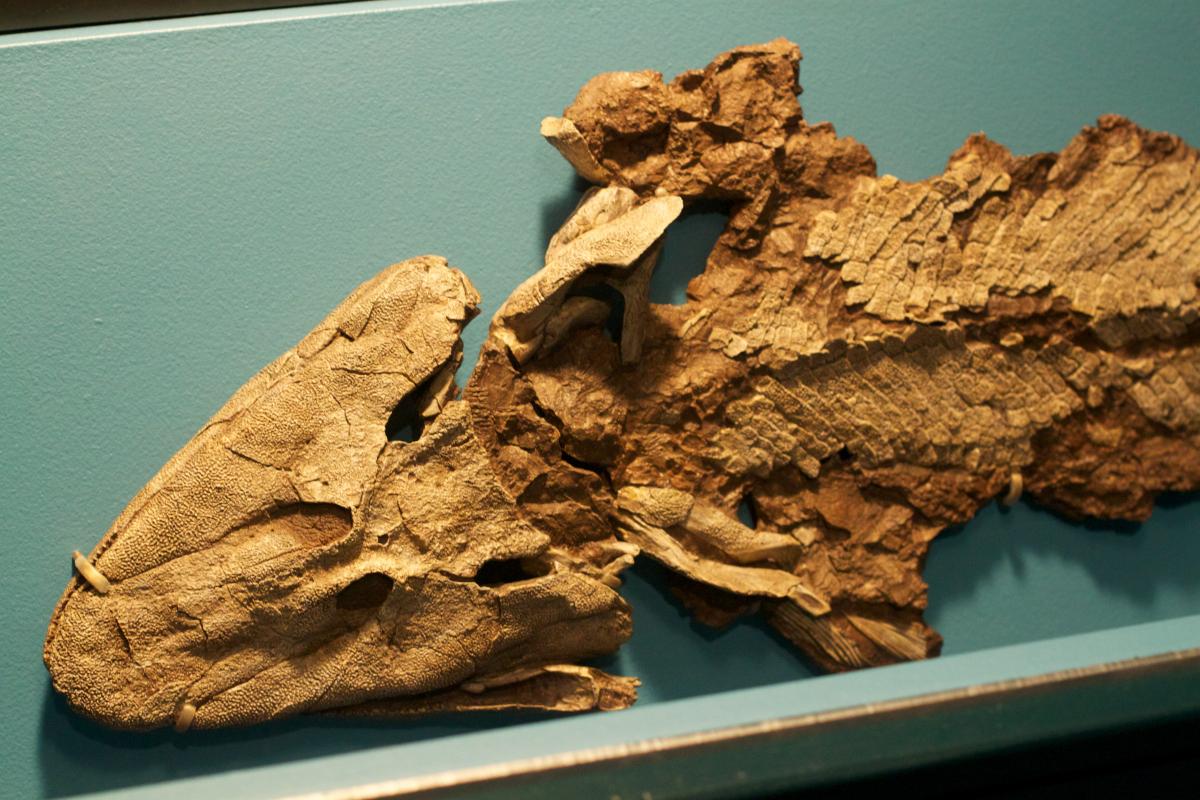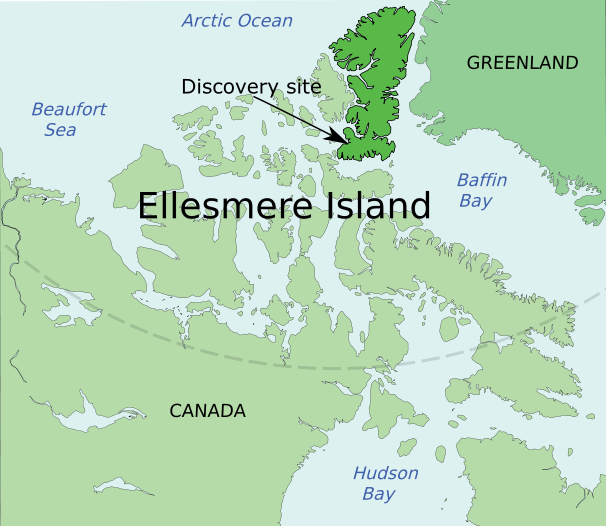I apologize for missing a Monday post. Last week, I was in Cleveland* for the National Association of Biology Teachers (NABT) meeting and just didn’t have time to write anything up. So it’s only fitting that I pull from that meeting my inspiration for this misconception post, however belated.
Misconception: Fossils are everywhere. Just dig.
Correction: Fossils are very rare. And you don’t dig; you look.
 The NABT meeting is really fun because it’s all biology all the time. It’s a much smaller meeting than, say, the National Science Teachers Association (NSTA), but the teachers that come are so dedicated and energized it doesn’t feel small—it feels important. I spent a lot of time with Ann Reid, NCSE's executive director, and we heard many a tale from the front, which inspired us to redouble our efforts to support teachers (more on this in the coming months). The highlight for me, though, was the Friday night party at the Rock and Roll Hall of Fame and Museum hosted by HHMI.
The NABT meeting is really fun because it’s all biology all the time. It’s a much smaller meeting than, say, the National Science Teachers Association (NSTA), but the teachers that come are so dedicated and energized it doesn’t feel small—it feels important. I spent a lot of time with Ann Reid, NCSE's executive director, and we heard many a tale from the front, which inspired us to redouble our efforts to support teachers (more on this in the coming months). The highlight for me, though, was the Friday night party at the Rock and Roll Hall of Fame and Museum hosted by HHMI.
For those of you that don’t know, HHMI (that’s the Howard Hughes Medical Institute) has a really fabulous education outreach arm known as BioInteractive. I am fortunate enough to work with that group (one of my many hats) and the materials—all free!—are top notch. Sean Carroll, preeminent research scientist, author, and science communicator famous for his work on evo-devo, has the helm at BioInteractive, and he has focused their efforts on storytelling—the idea being: if science were more like a good book, more people would be interested in it. To help achieve this make-science-as-engaging-as-possible goal, HHMI has developed a number of short films for use in the classroom. If you’re a science teacher, I cannot urge you strongly enough to check them out—they’re fabulous. If you’re not a science teacher, I cannot urge you strongly enough to check them out—they’re fabulous.
At this NSTA meeting HHMI debuted the first short film in  their “Great Transitions” series, The Origin of Tetrapods. The film pulls from the PBS documentary Your Inner Fish (which is also an excellent book) but also includes original material. The BioInteractive team worked closely with the book’s author, Neil Shubin, to craft a 20-minute film that, yes, tells a remarkable story. (Fun fact: Neil is my academic brother of sorts; we both had the same advisor in graduate school, albeit a couple decades apart.)
their “Great Transitions” series, The Origin of Tetrapods. The film pulls from the PBS documentary Your Inner Fish (which is also an excellent book) but also includes original material. The BioInteractive team worked closely with the book’s author, Neil Shubin, to craft a 20-minute film that, yes, tells a remarkable story. (Fun fact: Neil is my academic brother of sorts; we both had the same advisor in graduate school, albeit a couple decades apart.)
The story is about the discovery of Tiktaalik, the “fishapod” that helped us to understand more about the remarkable transition from water to land made by our vertebrate cousins about 375 million years ago. (Check: No one called it a missing link in his or her head, right? Because we’re learning, right? Good.) So, why am I telling you all of this? Because at that NABT party, HHMI showed the short film and Neil Shubin himself was there to answer questions…and pose for a lot of selfies. It was biology nerd heaven.
In the film, and in this article, Dr. Shubin describes his team’s years-long hunt for early tetrapods. The story’s conclusion, finding this remarkable creature in the Canadian Arctic, is so compelling, however, that I think many people fail to appreciate its beginning and middle. It took years to find this thing, a fact that presents a fabulous teachable moment for students and interested parties alike: why oh why did it take years?
 The answer? Because it’s really really hard to become a fossil and it’s even harder to be a found fossil. As much as certain films (ahem Jurassic Park ahem) would like us to believe that it’s as easy as brushing away some dirt and finding a perfectly preserved perfectly complete fossil, or worse, using some not-really-real technology to penetrate the ground to find a perfectly preserved perfectly complete fossil, that just isn’t how it works.
The answer? Because it’s really really hard to become a fossil and it’s even harder to be a found fossil. As much as certain films (ahem Jurassic Park ahem) would like us to believe that it’s as easy as brushing away some dirt and finding a perfectly preserved perfectly complete fossil, or worse, using some not-really-real technology to penetrate the ground to find a perfectly preserved perfectly complete fossil, that just isn’t how it works.
Are there remarkable fossil specimens? Absolutely! Tons of them! But they are the exception, not the rule. So, in part 2 coming next week, on Monday this time, I’ll walk us through it—what does it take to become a fossil and what does it take to be found? If you can understand that, if our students can understand it, it will go a long way to not only appreciating what we do know, but it should also wet your appetite to discover all that we have yet to know.

*It snowed the entire time we were in Cleveland and it basically traumatized me. I’m from Boston, so I’m used to snow, but it was too early! For any readers in the Buffalo area, feel free to laugh.
Have an idea for a future Misconception Monday or any other kind of post? See some good or bad examples of science communication lately? Drop me an email or shoot me a tweet <at>keeps3.

